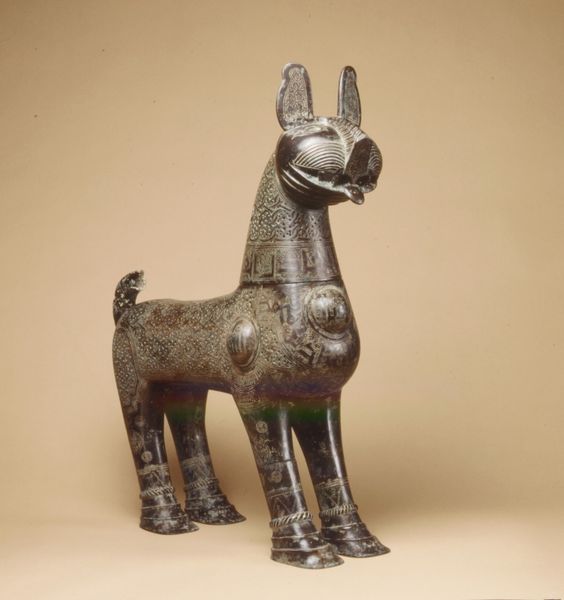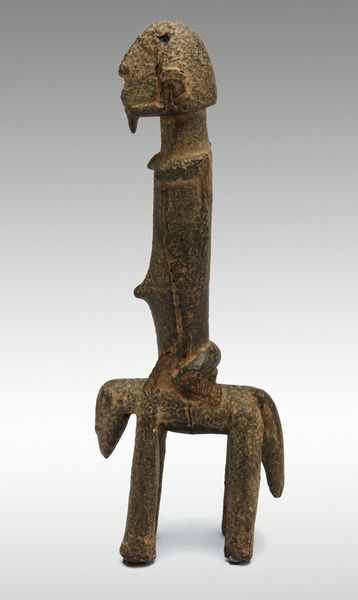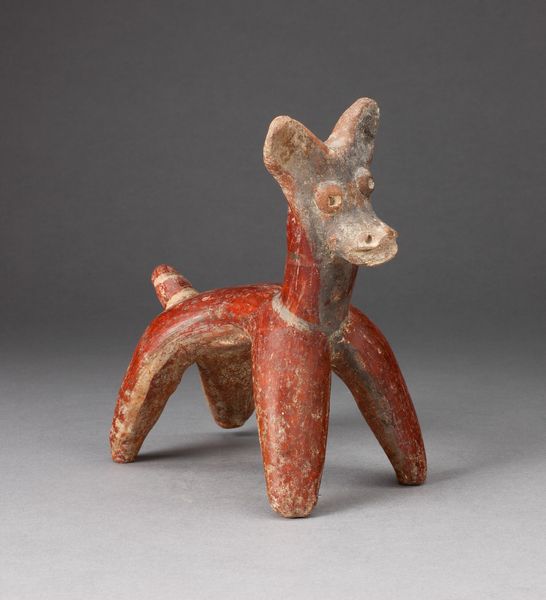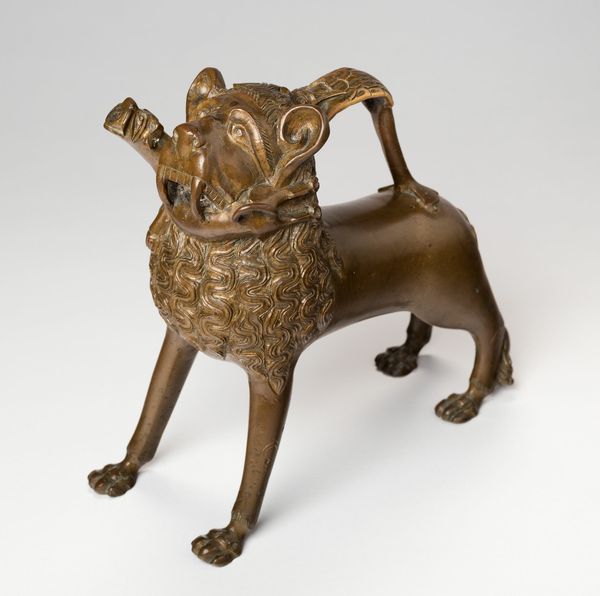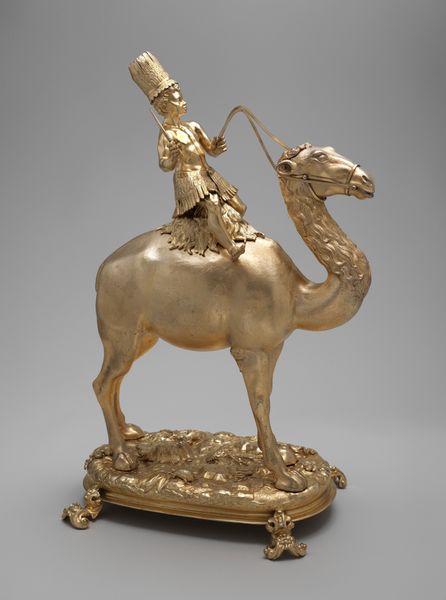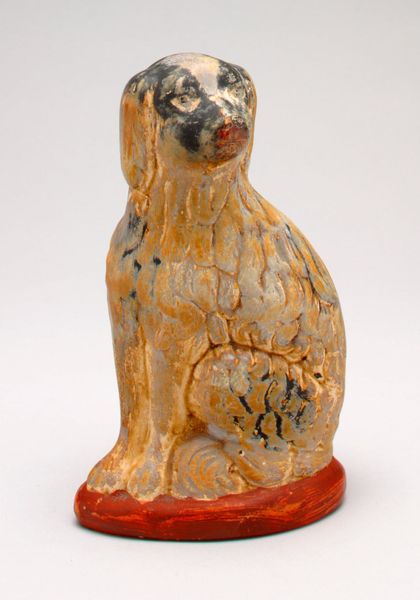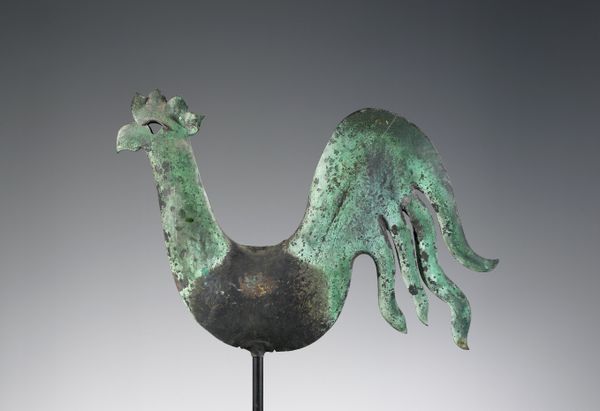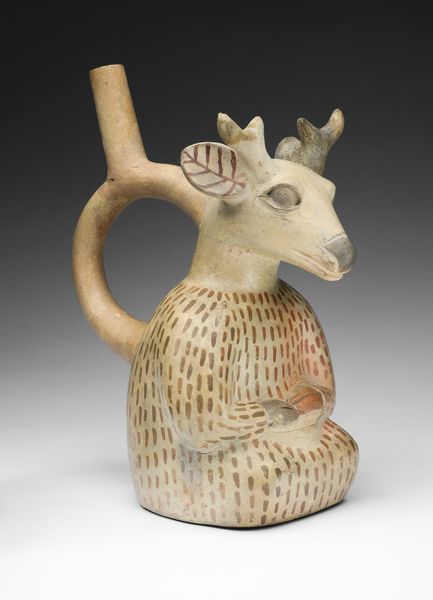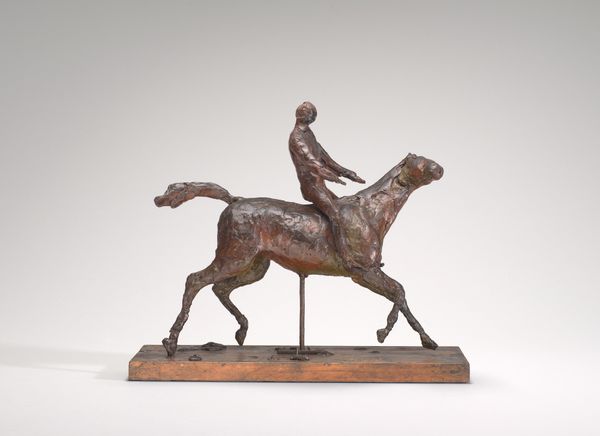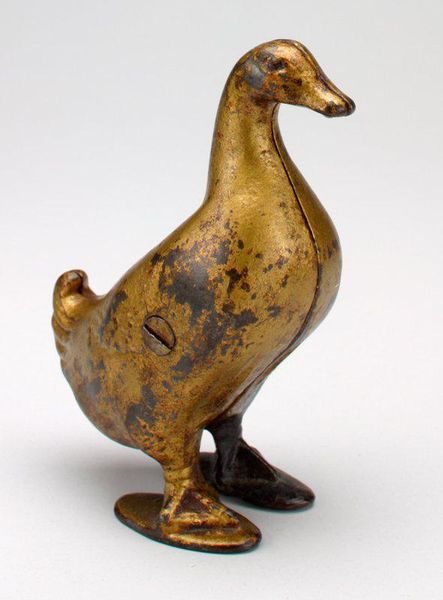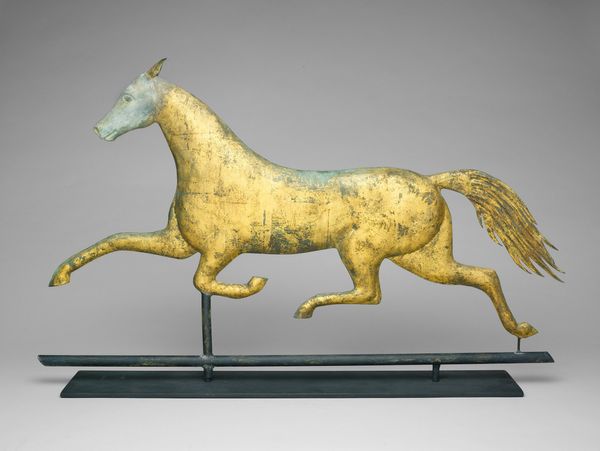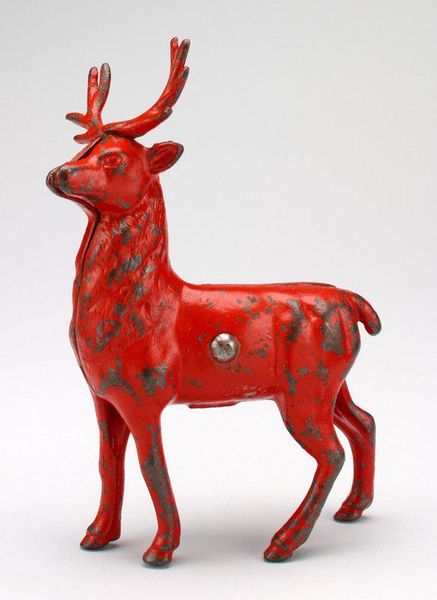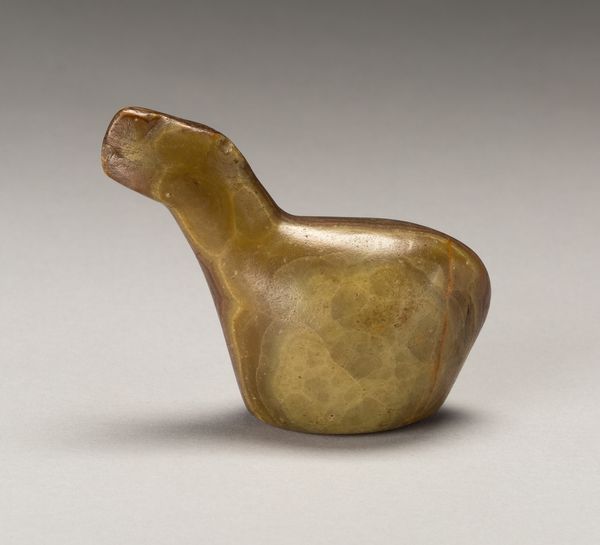
metal, bronze, sculpture
#
metal
#
bronze
#
figuration
#
sculpture
Dimensions: 7 3/8 x 2 1/8 x 6 1/2 in. (18.73 x 5.4 x 16.51 cm)
Copyright: No Known Copyright
Editor: Here we have "-Camel," a bronze sculpture by the A.C. Williams Company, estimated to be from 1917 to 1929. The metallic sheen catches the light so nicely. It's quite charming, almost like a children’s toy. How would you interpret its creation in that specific period? Curator: It's fascinating to consider this "toy" in the early 20th century. Mass production of metal toys became increasingly prevalent, reflecting industrial advancements. A piece like this tells us about shifting cultural values and the expanding consumer market, especially concerning leisure and play. Have you considered who the target audience might be? Editor: Probably children from middle-class families? But why a camel? What made it such a popular subject then? Curator: Precisely. And think about the larger socio-political context. The early 20th century saw a rise in Orientalism. Objects like this often perpetuated romanticized, sometimes inaccurate, images of faraway lands. They can subtly reflect colonial power dynamics by making foreign cultures accessible and "manageable" as commodities. It invites us to question how representations can influence public perception and policy. Does that shift your understanding? Editor: Absolutely! I didn't think about how the market influences these art objects and vice versa. This makes the piece so much more interesting. Curator: Exactly! Every artifact, no matter how small or seemingly trivial, tells a more profound story of its time if you analyze its relationship with socio-economic currents and institutions. Editor: I'll definitely think about that for next time. I guess the innocent charm is just the surface.
Comments
No comments
Be the first to comment and join the conversation on the ultimate creative platform.
